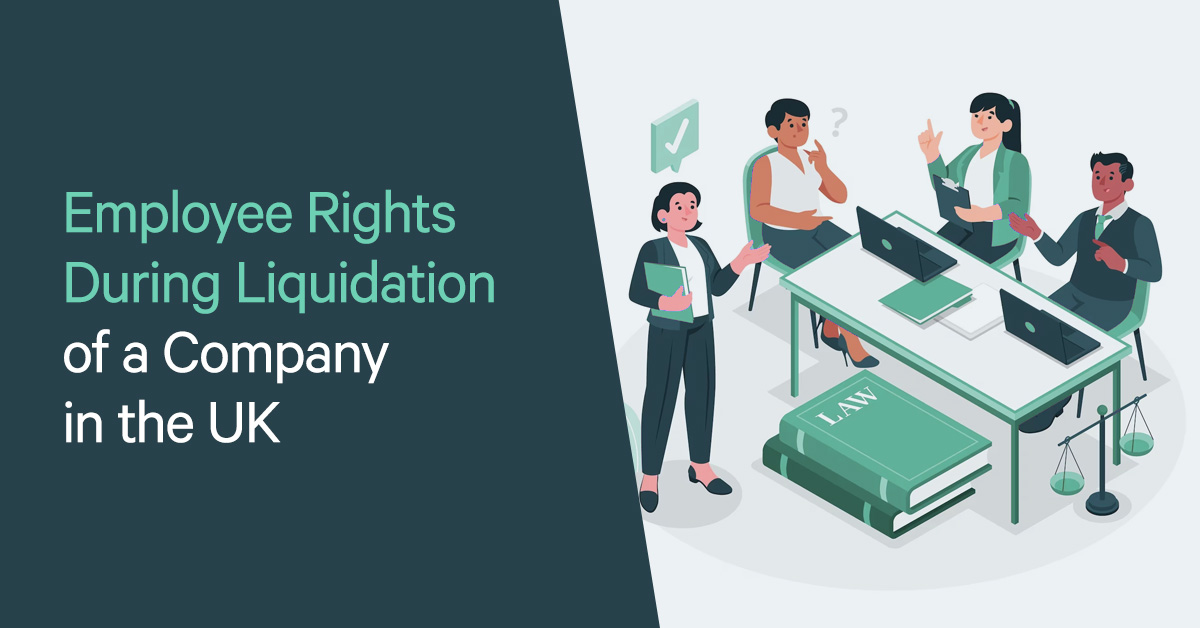If a Company Goes Into Administration, What Happens to Staff Payments and Redundancy? A Guide for Administration Staff
If a Company Goes Into Administration, What Happens to Staff Payments and Redundancy? A Guide for Administration Staff
Blog Article
Business Insolvency Company
7 Preswich Avenue, Leigh, WN7 1RZ
0333 567 1686
Understanding the Repercussions of Company Liquidation on Employee Retention and Perks

Influence On Task Protection
In the event of firm liquidation, the influence on work safety and security can be considerable for employees as uncertainty relating to future employment emerges. When a company enters into liquidation, workers face the difficult prospect of potential work loss. This uncertainty can result in enhanced tension and anxiety amongst the labor force, influencing their spirits and efficiency.
Throughout the liquidation process, staff members might experience a variety of emotions, consisting of anger, aggravation, and anxiety, as they face the opportunity of joblessness. The lack of quality bordering the timeline of the liquidation and the fate of their positions can develop a feeling of instability within the workforce.
Additionally, employees may also be concerned concerning the standing of their benefits, such as health care coverage, retired life strategies, and paid pause, during and after the liquidation process. The prospective loss of these advantages includes another layer of complexity to a currently challenging situation for workers.
Adjustments in Worker Conveniences

One usual change is the decrease or removal of particular benefits to reduce expenses and clear up superior debts. Employer payments to retirement strategies may stop, leaving employees to take on the full responsibility of saving for their future. Medical care advantages may be scaled back, resulting in higher out-of-pocket costs for clinical solutions.
Communication comes to be critical during this duration of transition. Employers must be transparent about the adjustments, offering clear descriptions and aid to assist employees navigate through the alterations. Open up dialogue and assistance can help minimize stress and anxiety and uncertainty amongst the workforce, fostering a more positive shift experience despite the challenging conditions.
Retention Methods Post-Liquidation
Complying with the company liquidation, applying effective retention strategies is essential to securing organizational ability and keeping security within the labor force. In times of uncertainty, staff members might really feel anxious concerning their future task safety and security and be extra inclined to look for alternate job opportunity. Homepage To minimize this danger, companies must concentrate on open interaction, offering openness concerning the business's situation, and offering support to workers throughout the shift period.
One key retention approach post-liquidation is to prioritize employee health and spirits. This can be achieved with normal check-ins, counseling services, and developing a favorable workplace. In addition, offering job advancement chances and upskilling programs can increase employee inspiration and involvement throughout tough times. Acknowledging and rewarding staff members for their commitment and dedication can also cultivate a sense of commitment and dedication to the company.
In addition, establishing a clear occupation development course and establishing realistic goals can give employees an orientation and function within the firm (administration staff). By purchasing worker growth and actively entailing them in decision-making procedures, organizations can increase employee retention prices and construct a resistant workforce post-liquidation
Legal Civil Liberty and Securities
During the consequences of firm liquidation, it is essential to address the lawful civil liberties and protections available to staff members to guarantee a reasonable and certified process. It is critical for staff members to comprehend these legal rights and seek legal guidance if needed to navigate the intricacies of the liquidation process.
Additionally, in cases where a company goes right into liquidation, workers are frequently thought about advantageous lenders, approving them higher top priority in receiving superior settlements over other financial institutions. Recognizing these lawful civil liberties and defenses is basic for employees to secure their passions and seek ideal choice in the occasion of business liquidation - do you still get redundancy if company goes into administration.
Managing Financial Unpredictability
Browsing economic unpredictability can be a challenging obstacle for employees affected by firm liquidation. The abrupt loss of earnings, advantages, and task protection can substantially disrupt people' economic advice stability. Throughout such times, it Website is critical for employees to evaluate their existing financial scenario realistically. Developing a thorough budget that focuses on vital expenses can assist in handling instant economic needs. In addition, exploring available government support programs, such as welfare or retraining chances, can supply some alleviation.
It is essential for staff members to remain educated regarding their privileges, such as severance packages or superior repayments, to ensure they obtain what they are owed. By proactively addressing monetary challenges, workers can navigate with the uncertainty caused by company liquidation with better resilience and preparedness.
Conclusion
In verdict, business liquidation can have considerable effects on employee job safety and security, benefits, and overall health. Understanding legal rights and protections can aid minimize the influence of liquidation on workers.
When a firm deals with liquidation, the fate of its staff members hangs in the balance, increasing essential inquiries regarding job safety, benefits, and long-lasting stability. The influence of company liquidation on worker retention and advantages is a diverse issue that demands a better exam to understand the full scope of its repercussions.
Browsing monetary uncertainty can be a difficult obstacle for staff members affected by firm liquidation. By proactively addressing economic difficulties, employees can navigate through the uncertainty caused by company liquidation with better strength and readiness.

Report this page